Fukuoka castle was built after the reunification of Japan by the Tokugawa family in 1605.
After contributing to the victory of Sekigahara battle, Kuroda Nagamasa received the title of Feudal overlord of Chikuzen (actual Fukuoka).
They chose to build this new palace for 2 reasons : Firstly, acquiring a castle big enough to inspire respect and, secondly, in order to take advantage of the hill’s geography for its defense. This impregnable building involved a process of putting together multiple layers of stonewall. But because that was not enough, a moat filled with seawater was constructed outside the walls.
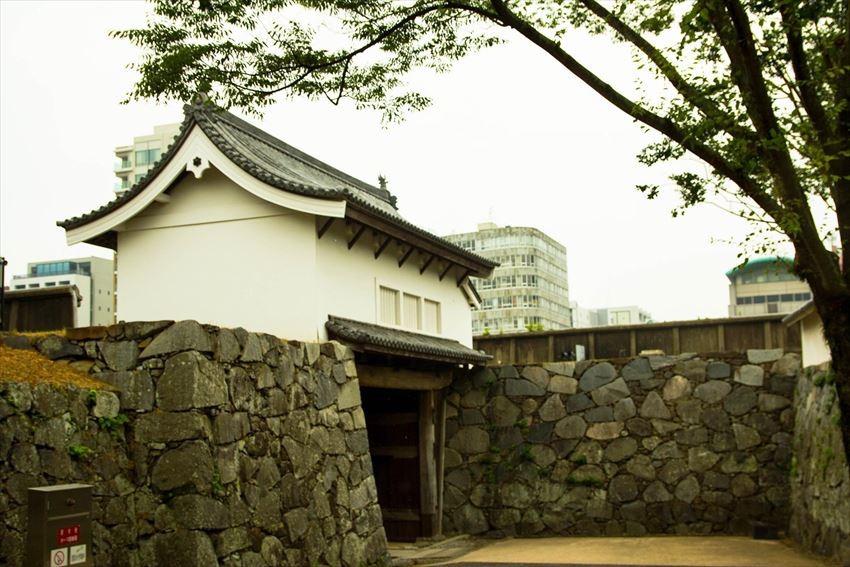
Kuroda Family and Ohori Park
Kuroda’s clan originally comes from Totomi province (today’s Shizuoka prefecture) but in the end of the 16th century, its members were consecutively allocated two lordships: Nakatsu Castle to Kuroda Yoshitaka (in 1587) and Fukuoka Domain to his son, Kuroda Nagamasa (in 1600). They served the three main protagonists of Sengoku period (Age of warring states | 1467-1603) : in the chronological order Oda Nobunaga, Toyotomi Hideyoshi and Tokugawa Ieyasu. Whereas Kuroda Yoshitaka was known for being a reputed strategist and adviser to Toyotomi Hideyoshi, Nagamasa gained respect from Tokugawa Ieyasu in Sekigahara battle.
Castle’s architecture
Distance around Ohori Park
It is about 5 kilometers around this park, and it is a good distance for jogging. You can see some local people and even some travelers from abroad running around this park in the early morning.
The mound
Japanese castles are usually based on an artificial mound, even if this particular one was build on a land chosen for its appropriate geography. This was meant not only to help defending its inhabitants because if an enemy attempted to draw near, the attack would be easily detected, but also to look more majestic. Though, the strategic aspect of an elevated land is undeniable, it was also a way to assert their strength and legitimacy to hold such a valuable title.
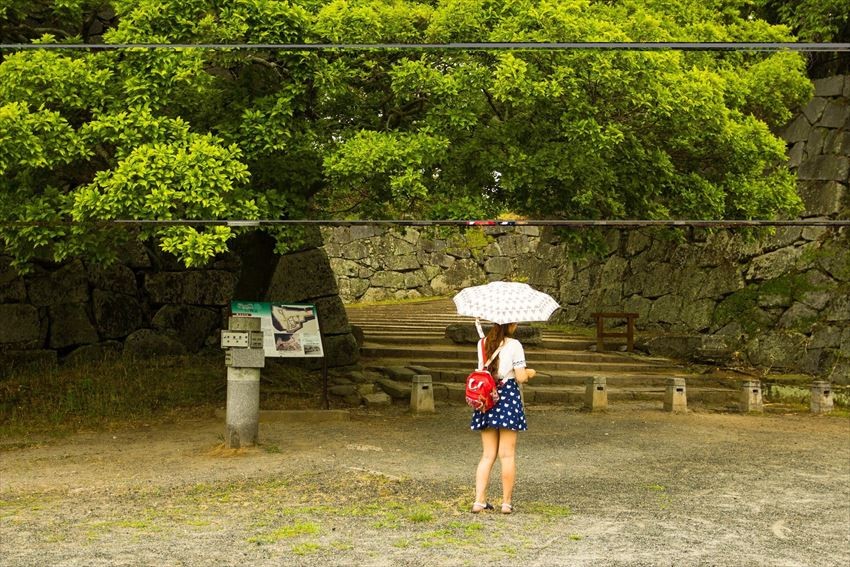
Tenshu-kaku, the main tower
Fukuoka Castle’s main tower was reputed to be 26m high (starting from the stonewall.) To give you an order of magnitude the taller main tower was Azuchi Castle measures 42m high (Omi prefecture). Note that it was Oda Nobunaga’s dwelling, so it undeniably needed to be well guarded and radiant.
Today, it is not existing anymore, but we can still climb up to the top of its stone base. Admiring the beautiful 360 degrees landscape from this viewpoint will bring the feeling of what it meant to be a overlord back in the 17th century.
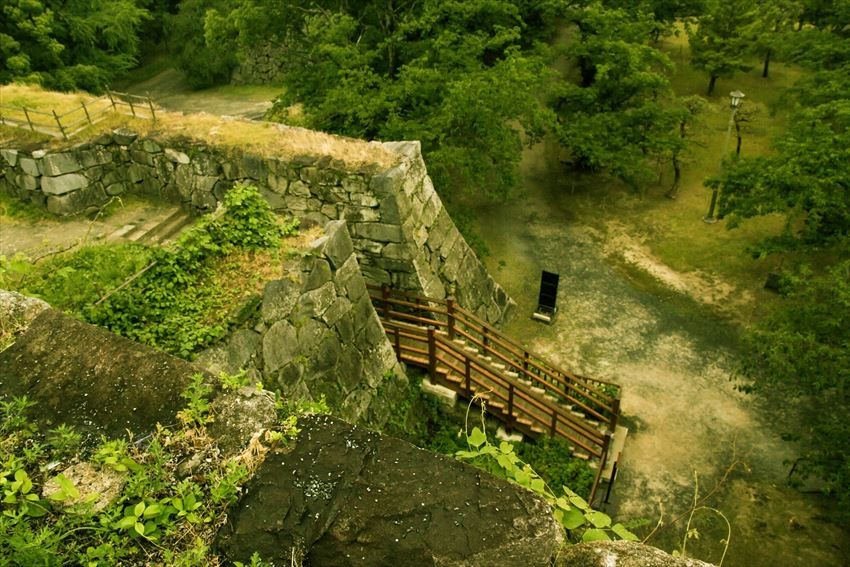
The base of the walls were made with stones, placed in such a way that it could hold in steep hills. A positioning reinforcing the stability of the frame, notably for earthquakes. Some says that this prowess was just a fortunate coincidence. The bottom stones could reach around 6m high, which represents a gigantic weight to move.
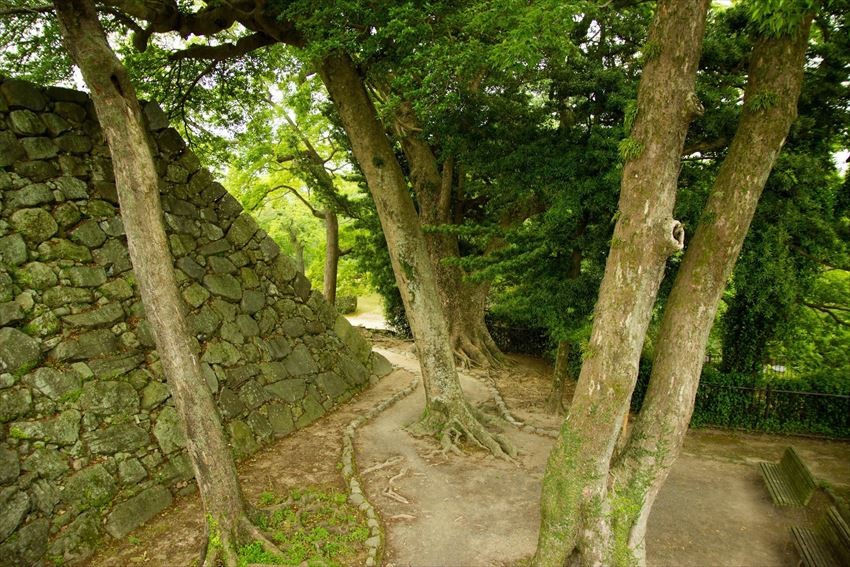
So we should at least credit them with that success. It is hard to visualize their real size in pictures, but when you walk by those fortifications, you instantly realize the scope of it. As we’ve seen earlier, the almost only remaining things of Fukuoka Castle’s are the stone walls, but believe me, that is something impressive!
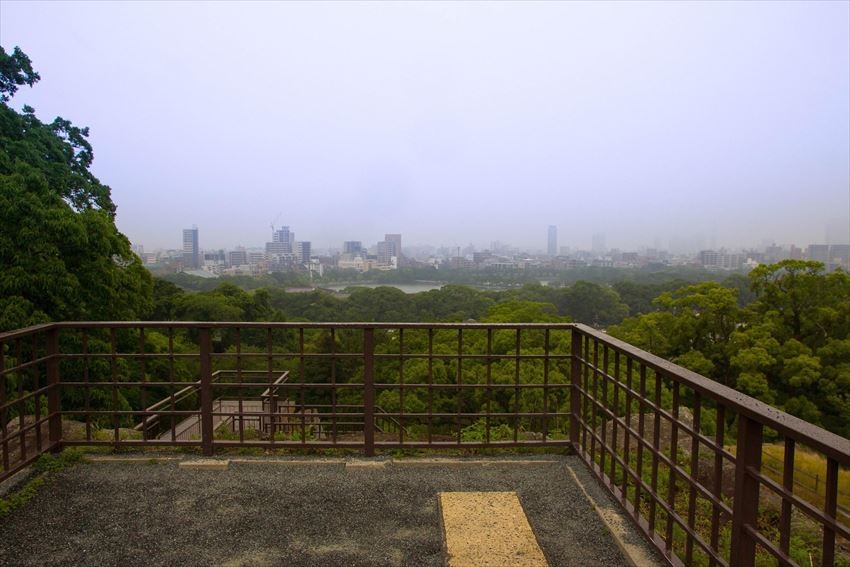
Hon-Maru, the main district
Hon-Maru, 本丸, literally “main circle”, because as the center of the feudal city, it is on the top of the mound and inevitably encircled by the stone fence serving as a protection. It houses the main tower and the political headquarter. Walking through this plateau-like district is surrealist, since it now looks like a mere vestige of a lost past.
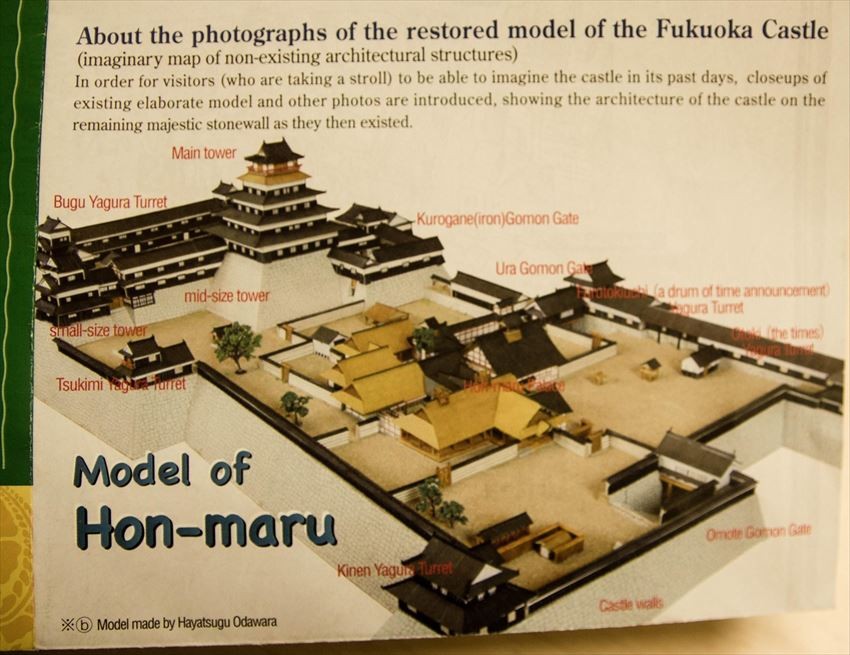
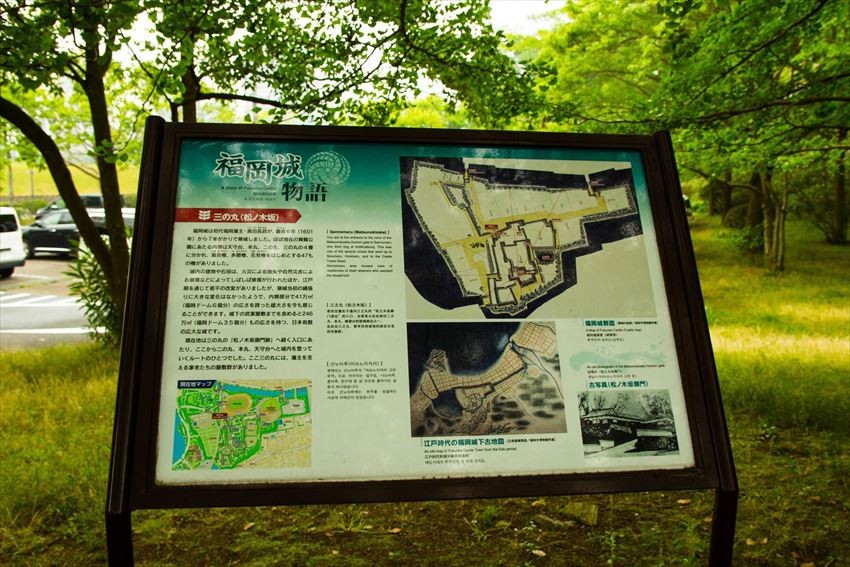
Then there are “Ni-no-Maru” and “San-no-Maru”, which are successive layers of circular stone walls hosting the high ranked samurai families.
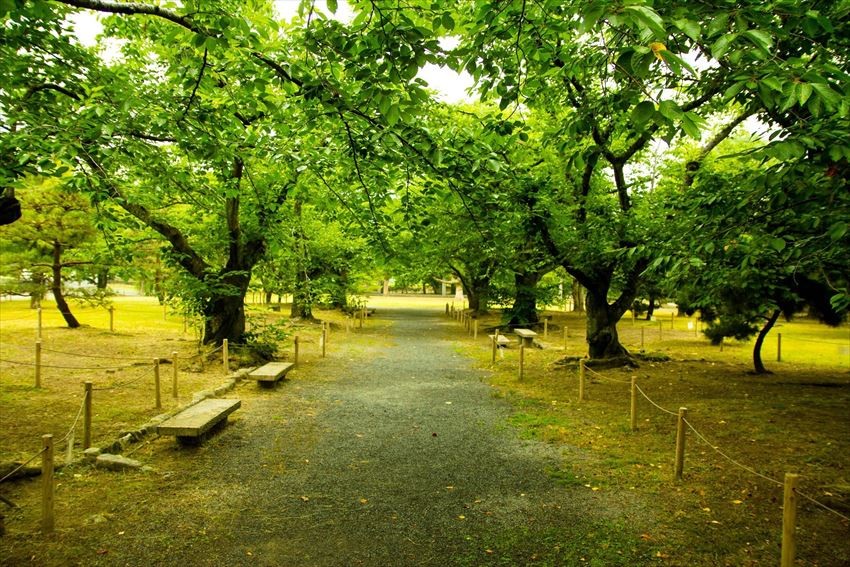
I couldn’t find San-no-Maru in Fukuoka Castle, either because the scale of the castle was too small to have more than two layers or just because there is nothing of it remaining today.
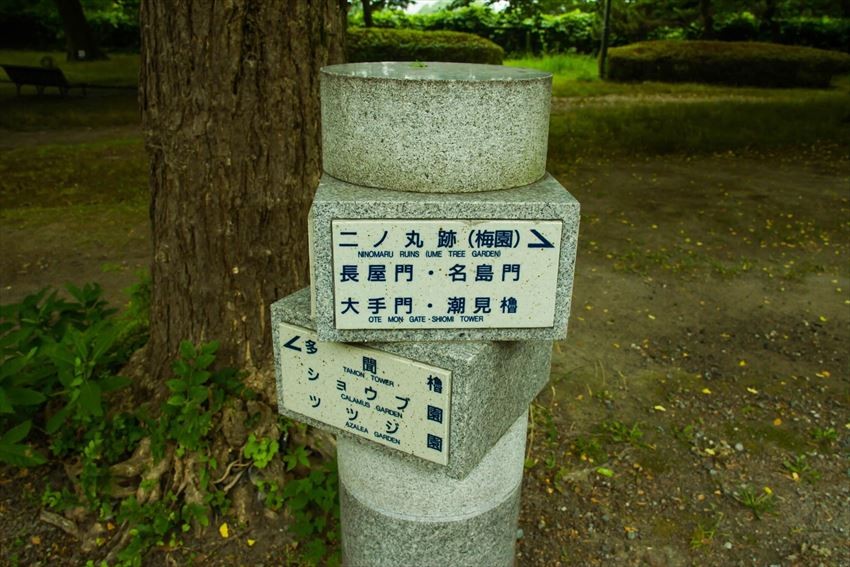
Finally, the city all around populated by commoners and peasants called “Jokamachi”, 城下町 or “castle town”, was not protected by a wall unlike many European medieval cities. It would seem that they were not afraid of losing the rabble in the enemy’s hand.
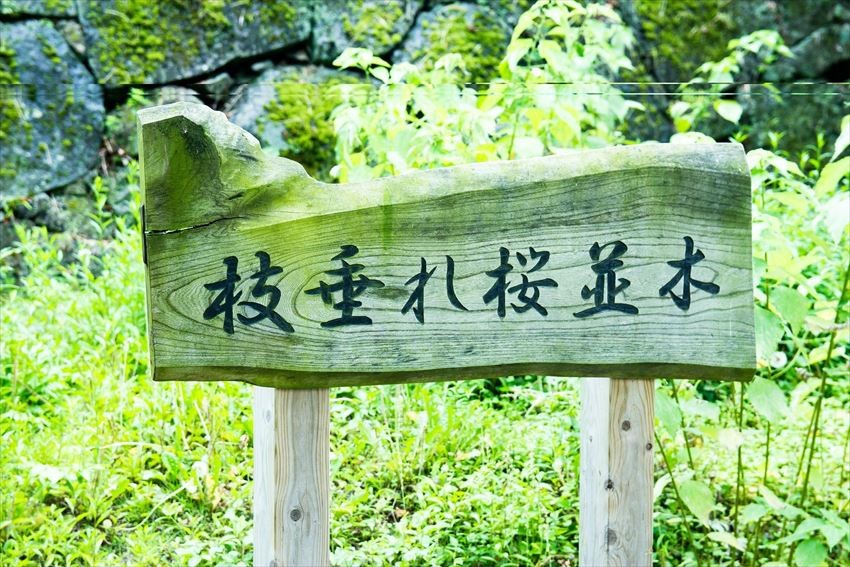
Conclusion
Fukuoka Castle’s remains is a relatively popular spot, because it is located in the famous Ohori Park, thus easy to access and benefiting from a luxuriant environment. However, I think that knowing a bit more about its construction and historic background can make this little stroll a way more interesting journey !
Information
- Access : From Tenjin/Hakata : Take Kuko line and get off at Ohori Koen station and walk toward Maizuru Park (around 5/8 min).
- Address : Fukuoka Prefecture, Fukuoka, Chuo Ward, Ohorikoen, 1−2
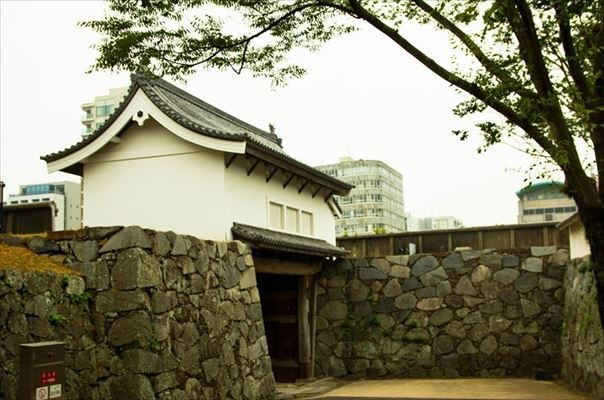
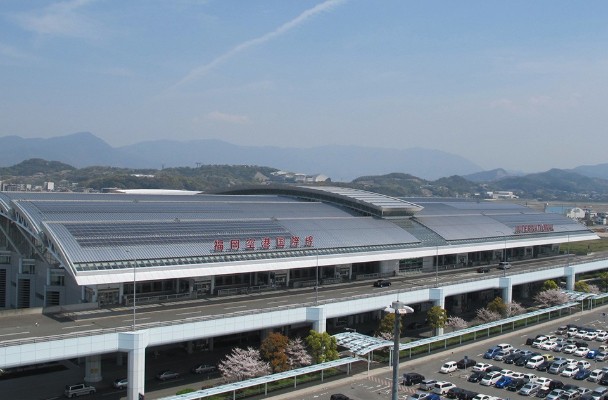
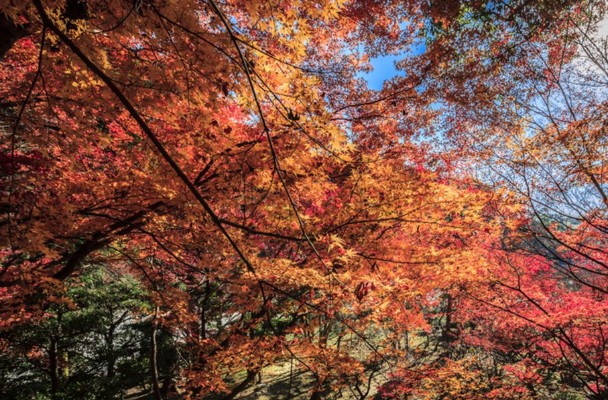


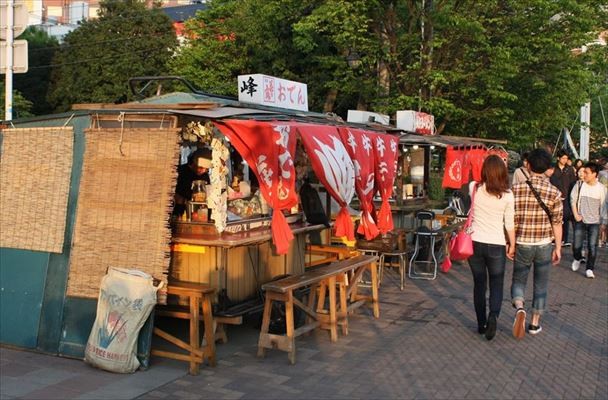
Comments